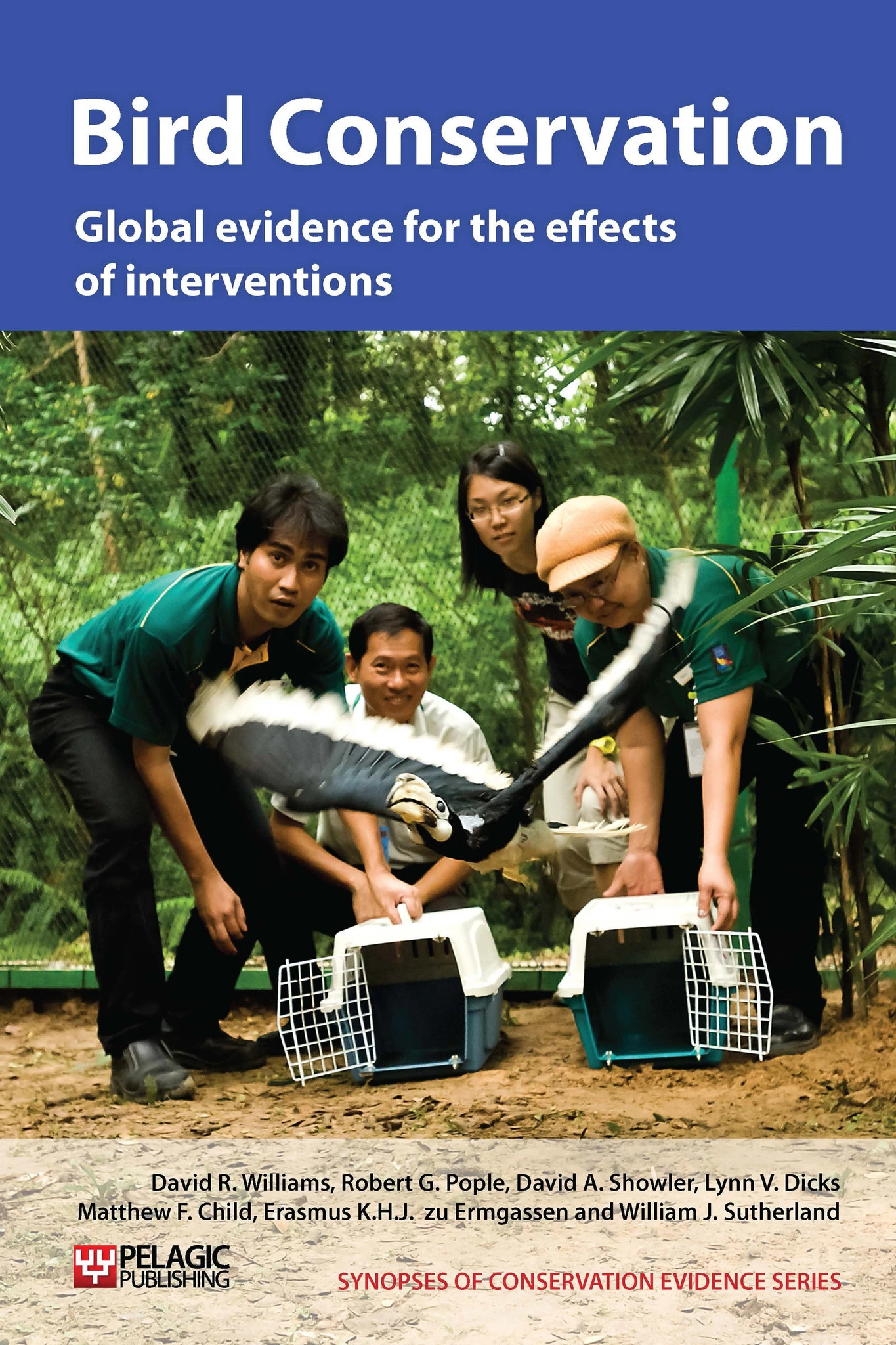Legally protect habitats
-
Overall effectiveness category Likely to be beneficial
-
Number of studies: 6
View assessment score
Hide assessment score
How is the evidence assessed?
-
Effectiveness
50% -
Certainty
52% -
Harms
0%
Study locations
Supporting evidence from individual studies
A before-and-after study in the western Pyrenees, Spain (Donázar & Fernández 1990), found that the population of griffon vultures Gyps fulvus increased from 282 pairs (in 23 colonies) in 1969-75 to 1,097 pairs (46 colonies) in 1989 following the initiation of multiple conservation interventions including the creation of reserves at nine breeding colonies (one in 1976, eight in 1987). This study is also discussed in more detail in ‘Use legislative regulation to protect wild populations’, ‘Restrict certain pesticides or other agricultural chemicals’ and ‘Provide supplementary food to increase adult survival’.
Study and other actions testedA 1998 literature review (Davis 1998) found that 25,500-31,800 cranes (Gruidae) of seven species used 32 nature reserves, established mainly for crane conservation, in China in 1994. This review is also discussed in ‘Use education programmes and local engagement to help reduce pressures on species’, ‘Use legislative regulation to protect wild populations’, ‘Mark power lines to reduce incidental mortality’, ‘Provide supplementary food to increase adult survival’ and ‘Release captive-bred individuals’.
Study and other actions testedA replicated, randomised, controlled study in 1992-4 in Buenos Aires Province, Argentina (Cueto & Casenave 2000), found that total bird abundance and species richness was significantly higher in September, December and March in a protected old-growth tala-coronillo woodland (free of human disturbance for >100 years) than in a woodland selectively logged for Celtis tala until 1960. Insect-eating bird density and species richness was higher in the protected woodland than in the exploited woodland and fruit-eating birds showed higher total density in the protected woodland in spring and summer but species richness was similar between both woodland types. There were no differences between sites for seed-eating birds.
Study and other actions testedA replicated study in 1997 in 19 nature reserves across England (Ausden & Hirons 2002) found that they held consistently higher densities of northern lapwing Vanellus vanellus, common redshank Tringa totanus and common snipe Gallinago gallinago than the non-reserve Environmentally Sensitive Areas (an agri-environment scheme designation) surrounding them (densities approximately 730% higher for lapwing, 520% higher for redshank and 1600% higher for snipe). In addition, population trends were generally positive in reserves (except for snipe), but negative outside them (lapwing: 0.9-7.4% annual increase inside reserves vs. 0.7-13% decline outside; redshank: 3.9-8.6% increase vs. 1.8-18.6% decrease; snipe: 6.1-16.8% decrease in reserves vs. 7.3-29.7% decrease outside). The authors note that snipe have declined by approximately 70% across all reserves, due mainly to declines at a single reserve with a large population and on reserves with mineral soils (i.e. those with little organic matter). However, declines outside reserves were considerably higher than those on reserves (20% vs. 10% annually). This study is discussed in detail in ‘Pay farmers to cover the costs of conservation measures’ and ‘Maintain traditional water meadows’.
Study and other actions testedA controlled, before-and-after study from 1970-2000 across Europe (Donald 2007) found that targeted species in European Union (EU) countries, which were legally obliged to increase coverage of special protected areas (SPAs), had significantly more positive population trends after implementation of the directive and compared to non-EU countries (no implementation). Statistical models suggested that for every additional 1% increase in SPA area, the chances of all species experiencing positive population growth increased by 4%, with a 7% increase for target species. The authors argue that the stronger response of the target species provides direct evidence for the effectiveness of the EU Bird (79/409/EEC, est. 1979) and Habitats (92/43/EEC, est. 1992) Directives. Although non-target species’ trends did not differ between EU and non-EU countries there was some evidence that these populations were more positive in EU countries with more extensive SPA networks.
Study and other actions testedA 2007 site comparison study of 677 plots covering 38,705 ha across southern England (Wilson et al. 2007) found that for three wader species, population trends were most favourable in nature reserves, compared with farmland under the Environmentally Sensitive Areas scheme. Between 1982 and 2002, common redshank Tringa totanus declined by 70% in the wider countryside but increased by 160% in nature reserves outside Environmentally Sensitive Areas. Northern lapwing Vanellus vanellus showed a 48% decline in the wider countryside, and increased only in nature reserves outside Environmentally Sensitive Areas (by 55%) and reserves with Environmentally Sensitive Area enhancement (121%). Common snipe Gallinago gallinago breeding numbers decreased everywhere (commonly with declines of 90% or more), although declines were smaller in nature reserves outside Environmentally Sensitive Areas (?66%) and reserves in Environmentally Sensitive Area enhancement (?24%).
Study and other actions tested
Where has this evidence come from?
List of journals searched by synopsis
All the journals searched for all synopses
This Action forms part of the Action Synopsis:
Bird Conservation
Bird Conservation - Published 2013
Bird Synopsis





)_2023.JPG)














